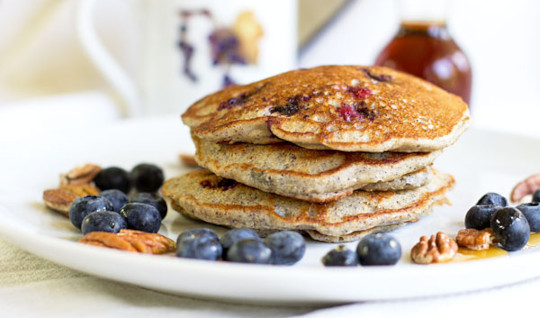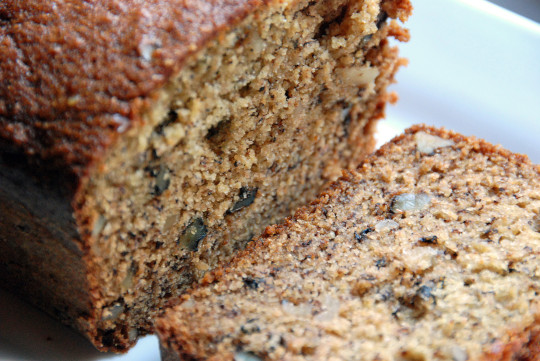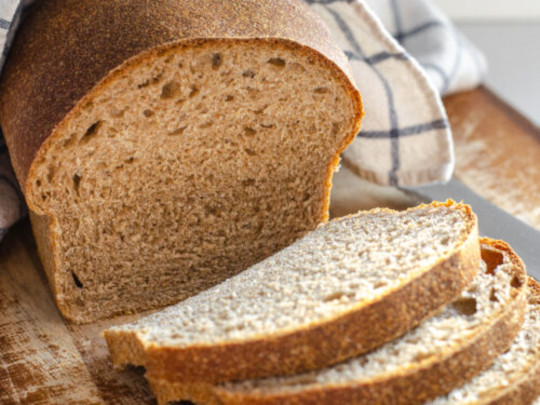
Are you looking to elevate your baking and cooking to a new level of health and nutrition? Look no further than sprouted wheat flour, a rising star in alternative flours.
We'll explore the benefits of sprouted wheat flour, how it's made, and why it's different from whole wheat or all-purpose flour. Get ready to unlock a world of flavor, nutrition, and culinary creativity!
What is Sprouted Wheat Flour?
Sprouted wheat flour is a unique type made from wheat grains that have undergone the sprouting process. The process involves soaking the wheat berries until they sprout, then carefully drying and milling them into fine flour. This method preserves the nutrients and enzymes in the wheat, offering benefits not found in traditional whole wheat or all-purpose flour.
Nutritional and Health Benefits
Sprouted wheat flour offers a range of nutritional and health benefits that set it apart from traditional flours. Firstly, the sprouting process enhances its digestibility by breaking down complex starches, making it easier for the body to process. Additionally, sprouting increases the bioavailability of vitamins and minerals, allowing for better nutrient absorption. Sprouted wheat flour boasts higher levels of essential nutrients such as B vitamins, vitamin C, folate, iron, zinc, and magnesium than its non-sprouted counterparts.
Another advantage of sprouted wheat flour is its increased enzyme activity. The sprouting process activates enzymes that aid in digestion and promote efficient nutrient absorption within the body. Furthermore, this flour has a lower glycemic index, meaning it has a smaller impact on blood sugar levels, resulting in steadier energy levels throughout the day.
For individuals with mild gluten sensitivities, sprouted wheat flour may offer relief. The sprouting process can break down some gluten proteins, making it more tolerable for those who experience mild gluten-related discomfort.
Beyond its nutritional benefits, sprouted wheat flour contributes to the overall quality of baked goods. It lends a lighter, fluffier texture and adds a delightfully nutty and slightly sweet flavor to recipes. Moreover, sprouted wheat flour has an extended shelf life due to natural preservatives developed during the sprouting process. This eliminates the need for artificial additives or preservatives.
In addition to its health and culinary advantages, sprouted wheat flour is also an environmentally conscious choice. The sprouting process reduces reliance on chemical fertilizers and pesticides, making it a sustainable and eco-friendly option.
By incorporating sprouted wheat flour into your recipes, you can enjoy the numerous nutritional benefits, improved digestibility, enhanced flavors, and contribute to a more sustainable food system.
Ten Reasons to Use Sprouted Wheat Flour
Sprouted wheat flour offers myriad benefits that set it apart from traditional flours. Whether you're a seasoned baker or a health-conscious home cook, here are ten reasons to incorporate sprouted wheat flour into your culinary repertoire:
1. Unlock Superior Digestibility: Say goodbye to heavy, bloated feelings after meals.
2. Embrace Maximum Nutrient Absorption: Fuel your body with the nutrients it needs to thrive.
3. Elevate your Vitamin and Mineral Intake: Boost your nutrition with abundant essential vitamins and minerals.
4. Experience Enzymatic Power: Support your digestive system with naturally occurring enzymes.
5. Stabilize Blood Sugar Levels: Maintain steady energy and avoid sugar crashes.
6. Enjoy Gluten Sensitivity Relief: Indulge in gluten-containing recipes more easily.
7. Delight in Lighter, Fluffier Textures: Elevate your baked goods to new levels of tenderness.
8. Savor the Nutty and Sweet Notes: Treat your taste buds to enhanced flavors in every bite.
9. Extend the Freshness of Your Creations: Keep your baked goods delicious for longer periods.
10. Make a Positive Impact on the Environment: Support sustainable practices and reduce your ecological footprint.
How to Incorporate Sprouted Wheat Flour in Recipes
Ready to explore the possibilities of sprouted wheat flour in your kitchen? The following recipes use coconut sugar, which has a lower glycemic index and some nutrients and minerals.
Here are four delectable recipes to get you started:
Sprouted Wheat Pancakes with Blueberries

Indulge in fluffy, wholesome pancakes topped with a burst of antioxidant-rich blueberries.
Ingredients:
- 1 cup sprouted wheat flour
- 1 tablespoon baking powder
- 1 tablespoon coconut sugar
- 1/2 teaspoon salt
- 1 cup almond milk (or any non-dairy milk)
- 1 tablespoon melted coconut oil
- 1 teaspoon vanilla extract
- Fresh blueberries for serving
- Maple syrup for serving
Instructions:
- Combine the sprouted wheat flour, baking powder, coconut sugar, and salt in a mixing bowl.
- Whisk together the almond milk, melted coconut oil, and vanilla extract in a separate bowl.
- Pour the wet ingredients into the dry ingredients and stir until just combined. Be careful not to overmix; a few lumps are okay.
- Heat a non-stick skillet or griddle over medium heat and lightly grease it with coconut oil or cooking spray.
- Pour 1/4 cup of the pancake batter onto the skillet for each pancake. Cook until bubbles form on the surface, then flip and cook for another 1-2 minutes until golden brown.
- Repeat with the remaining batter.
- Serve the sprouted wheat pancakes with generous fresh blueberries and drizzle with maple syrup.
Sprouted Wheat Banana Bread with Walnuts

Enjoy a moist and flavorful loaf packed with the goodness of sprouted wheat and the natural sweetness of ripe bananas and crunchy walnuts.
Ingredients:
- 2 cups sprouted wheat flour
- 1 teaspoon baking soda
- 1/2 teaspoon salt
- 1/2 teaspoon ground cinnamon
- 3 ripe bananas, mashed
- 1/2 cup coconut sugar
- 1/4 cup melted coconut oil
- 1/4 cup almond milk (or any non-dairy milk)
- 1 teaspoon vanilla extract
- 1/2 cup chopped walnuts
Instructions:
- Preheat your oven to 350°F (175°C). Grease a loaf pan with coconut oil or line it with parchment paper.
- Whisk together the sprouted wheat flour, baking soda, salt, and cinnamon in a large mixing bowl.
- In another bowl, mix the mashed bananas, coconut sugar, melted coconut oil, almond milk, and vanilla extract until well combined.
- Pour the wet ingredients into the dry ingredients and stir until just combined. Fold in the chopped walnuts.
- Pour the batter into the prepared loaf pan and smooth the top with a spatula.
- Bake for 50-60 minutes or until a toothpick inserted into the center comes clean.
- Remove from the oven and let it cool in the pan for 10 minutes before transferring to a wire rack to cool completely.
- Slice and enjoy the delicious sprouted wheat banana bread with tea or coffee.
Sprouted Wheat Pizza with Fresh Veggie Toppings

Create a nourishing and delicious pizza crust with sprouted wheat flour, then pile on your favorite fresh vegetables for a satisfying meal.
Ingredients:
- 2 cups sprouted wheat flour
- 1 teaspoon instant yeast
- 1 teaspoon coconut sugar
- 1/2 teaspoon salt
- 3/4 cup warm water
- 2 tablespoons olive oil
- Tomato sauce
- Fresh vegetables of your choice (e.g., bell peppers, mushrooms, cherry tomatoes, spinach)
- Vegan cheese (optional)
- Fresh basil leaves for garnish
Instructions:
- Combine the sprouted wheat flour, instant yeast, coconut sugar, and salt in a large mixing bowl.
- Gradually add the warm water and olive oil, stirring until the dough comes together.
- Transfer the dough onto a lightly floured surface and knead for about 5 minutes until smooth and elastic.
- Place the dough in a greased bowl, cover it with a clean kitchen towel, and let it rise in a warm place for about 1 hour or until doubled in size.
- Preheat your oven to 450°F (230°C).
- Punch down the dough and divide it into desired portions for individual pizzas or use the entire dough for a large pizza.
- Roll out the dough into your desired pizza shape and thickness.
- Spread tomato sauce evenly over the dough, leaving a small border for the crust.
- Top with your favorite fresh vegetables and vegan cheese (if using).
- Place the pizza(s) on a baking sheet or pizza stone and bake for 12-15 minutes or until the crust is golden and crispy.
- Remove from the oven and garnish with fresh basil leaves.
- Slice and serve the sprouted wheat pizza, savoring the wholesome flavors and nutritious crust.
Plain Sprouted Wheat Bread

Enjoy the pure goodness of sprouted wheat in a simple, homemade bread perfect for sandwiches or toast.
Ingredients:
- 3 cups sprouted wheat flour
- 2 teaspoons instant yeast
- 1 teaspoon salt
- 1 tablespoon coconut sugar
- 2 cups warm water (adjust if needed)
- 2 tablespoons olive oil
Instructions:
- Combine the sprouted wheat flour, instant yeast, salt, and coconut sugar in a large mixing bowl.
- Gradually add the warm water and olive oil, stirring until a dough forms.
- Transfer the dough onto a lightly floured surface and knead for about 8-10 minutes until smooth and elastic.
- Place the dough in a greased bowl, cover it with a clean kitchen towel, and let it rise in a warm place for about 1 hour or until doubled in size.
- Preheat your oven to 375°F (190°C).
- Punch down the dough and shape it into a loaf.
- Place the dough into a greased loaf pan, cover it with a towel, and let it rise for another 30-45 minutes.
- Bake the bread in the oven for 30-35 minutes or until the crust is golden brown and the bread sounds hollow when tapped on the bottom.
- Remove the bread from the oven and let it cool in the pan for a few minutes before transferring it to a wire rack to cool completely.
- Slice and enjoy the simple, wholesome goodness of sprouted wheat bread.
Sprouted wheat flour offers many benefits for your health and culinary adventures. By incorporating this nutrient-rich alternative into your recipes, you can elevate the nutritional value of your meals while indulging in the delicious flavors it brings. So why not embrace the power of sprouted wheat flour and discover a whole new world of taste and well-being?
Important Note: The 10 reasons mentioned for using sprouted wheat flour are widely recognized and supported by research. However, it's important to remember that individual responses to sprouted wheat flour may vary. While many people experience the mentioned benefits, such as improved digestibility, enhanced nutrient absorption, and better blood sugar regulation, it's always advisable to listen to your body and assess your own dietary needs and responses.
It's worth mentioning that some individuals with specific health conditions or dietary restrictions may still need to exercise caution when consuming sprouted wheat flour, even with its potential benefits. For example, individuals with celiac disease or severe gluten intolerance should consult a healthcare professional before incorporating sprouted wheat flour into their diet, as it may still contain traces of gluten.
Additionally, while sprouted wheat flour offers certain advantages over traditional flour, it's essential to maintain a balanced and varied diet. Consider incorporating a range of whole grains and flours to ensure a diverse nutrient intake.
As with any dietary change, it's always a good idea to consult a healthcare professional, such as a registered dietitian, who can provide personalized guidance based on your specific health needs and goals. They can help you determine if sprouted wheat flour is a suitable choice for you and assist in creating a well-rounded and nutritious diet plan.
Remember, individual responses to food can vary, and what works well for one person may not work the same for another. Pay attention to your body's cues and make informed choices that align with your unique needs and preferences.
About the Author
 Robert Jennings is co-publisher of InnerSelf.com with his wife Marie T Russell. He attended the University of Florida, Southern Technical Institute, and the University of Central Florida with studies in real estate, urban development, finance, architectural engineering, and elementary education. He was a member of the US Marine Corps and The US Army having commanded a field artillery battery in Germany. He worked in real estate finance, construction and development for 25 years before starting InnerSelf.com in 1996.
Robert Jennings is co-publisher of InnerSelf.com with his wife Marie T Russell. He attended the University of Florida, Southern Technical Institute, and the University of Central Florida with studies in real estate, urban development, finance, architectural engineering, and elementary education. He was a member of the US Marine Corps and The US Army having commanded a field artillery battery in Germany. He worked in real estate finance, construction and development for 25 years before starting InnerSelf.com in 1996.
InnerSelf is dedicated to sharing information that allows people to make educated and insightful choices in their personal life, for the good of the commons, and for the well-being of the planet. InnerSelf Magazine is in its 30+year of publication in either print (1984-1995) or online as InnerSelf.com. Please support our work.
Creative Commons 4.0
This article is licensed under a Creative Commons Attribution-Share Alike 4.0 License. Attribute the author Robert Jennings, InnerSelf.com. Link back to the article This article originally appeared on InnerSelf.com
Nutrition books on from Amazon's Best Sellers list
"The Blue Zones Kitchen: 100 Recipes to Live to 100"
by Dan Buettner
In this book, author Dan Buettner shares recipes from the world's "Blue Zones," regions where people live the longest and healthiest lives. The recipes are based on whole, unprocessed foods and emphasize vegetables, legumes, and whole grains. The book also includes tips for following a plant-based diet and living a healthy lifestyle.
Click for more info or to order
"Medical Medium Cleanse to Heal: Healing Plans for Sufferers of Anxiety, Depression, Acne, Eczema, Lyme, Gut Problems, Brain Fog, Weight Issues, Migraines, Bloating, Vertigo, Psoriasis, Cys"
by Anthony William
In this book, author Anthony William offers a comprehensive guide to cleansing and healing the body through nutrition. He provides evidence-based recommendations for foods to include and avoid, as well as meal plans and recipes to support the cleanse. The book also includes information on how to address specific health concerns through nutrition.
Click for more info or to order
"The Forks Over Knives Plan: How to Transition to the Life-Saving, Whole-Food, Plant-Based Diet"
by Alona Pulde and Matthew Lederman
In this book, authors Alona Pulde and Matthew Lederman offer a step-by-step guide to transitioning to a whole-food, plant-based diet. They provide evidence-based recommendations for nutrition, along with practical advice for shopping, meal planning, and preparation. The book also includes recipes and meal plans to support the transition.
Click for more info or to order
"The Plant Paradox: The Hidden Dangers in 'Healthy' Foods That Cause Disease and Weight Gain"
by Dr. Steven R. Gundry
In this book, Dr. Steven R. Gundry provides a controversial perspective on nutrition, arguing that many so-called "healthy" foods can actually be harmful to the body. He provides evidence-based recommendations for optimizing nutrition and avoiding these hidden dangers. The book also includes recipes and meal plans to help readers implement the Plant Paradox program.
Click for more info or to order
"The Whole30: The 30-Day Guide to Total Health and Food Freedom"
by Melissa Hartwig Urban and Dallas Hartwig
In this book, authors Melissa Hartwig Urban and Dallas Hartwig offer a comprehensive guide to the Whole30 program, a 30-day nutrition plan designed to promote health and wellness. The book provides information on the science behind the program, as well as practical advice for shopping, meal planning, and preparation. The book also includes recipes and meal plans to support the program.




























